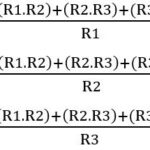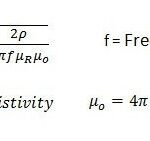What is Coding Used in LTE?
Today, we’re going to explore coding in LTE, which plays a vital role in ensuring the reliability and efficiency of data transmission. Coding is one of the core mechanisms that allow LTE networks to provide high-speed data services and maintain a robust connection, even in challenging environments.
Coding in LTE refers to the process of transforming data into a format that can be efficiently transmitted over the wireless network while protecting it against errors caused by noise or interference. In LTE, two primary coding schemes are used: channel coding and source coding. These help achieve error correction, reduce data loss, and ensure that the transmitted information is received correctly by the receiver.
Let’s dive deeper into these two types of coding used in LTE:
- Channel Coding: This coding ensures that data is transmitted over the air reliably, even if there is noise or interference. The primary channel coding techniques used in LTE include Turbo Coding and Polar Coding.
- Source Coding: This is used to compress the original data before it is sent over the network, reducing the amount of data that needs to be transmitted. LTE employs source coding for video, audio, and other data types, improving efficiency and reducing transmission delays.
Now, let’s focus on Turbo Coding and Polar Coding, the two most important methods of channel coding in LTE. These techniques help improve the overall data throughput, error correction, and transmission reliability:
- Turbo Coding: Turbo codes are the primary error correction mechanism used in LTE. They involve combining two or more convolutional codes in a parallel structure, along with an interleaver to spread the bits across the transmission. This method provides excellent performance even in low Signal-to-Noise Ratio (SNR) conditions. The use of Turbo codes allows LTE to deliver higher data rates and more reliable connections.
- Polar Coding: Polar codes, introduced in more recent LTE advancements (such as in LTE-Advanced), offer a more efficient way to correct errors compared to Turbo codes, especially when higher data rates are required. Polar codes are used for control channels, providing a robust method for error correction in situations where reliability is crucial, such as in critical signaling or handover processes.
The combination of Turbo Coding and Polar Coding in LTE allows the network to adjust dynamically to varying network conditions. For instance, when the network experiences poor signal quality or interference, these coding methods help ensure that the data is still transmitted accurately, preventing call drops or data loss.
Let me explain this a bit further. Imagine you are watching a video on your mobile device while moving through an area with fluctuating signal quality. Without proper coding, you might experience interruptions or buffering. However, thanks to Turbo and Polar Coding, the LTE network can correct errors and maintain the quality of your streaming experience, even when the signal isn’t perfect.
One of the key reasons for using coding in LTE is to achieve the right balance between data transmission speed and error correction. With advanced coding techniques, LTE can deliver fast data rates while minimizing the impact of errors that could degrade the user experience. This helps LTE maintain its reputation as a high-performance mobile communication standard.
In previous articles, we’ve touched on how LTE technologies enhance user experience, and coding is central to achieving that goal. By effectively utilizing Turbo and Polar codes, LTE ensures that you can enjoy high-speed internet, smooth video streaming, and reliable voice calls, even in challenging network conditions.


